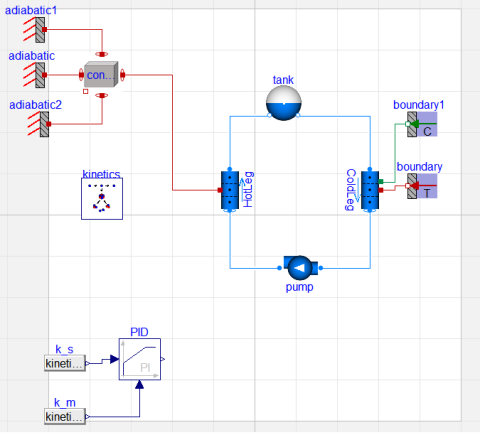The purpose of this project is to design a micro nuclear reactor that can be used for future use to address the problem of minimizing personnel for reactors that are powering small and remote locations. Dymola was used as the modeling environment for the microreactor design, with the TRANSFORM library used within the environment. The goal is that the modeled reactor in Dymola will produce a solid output from the simulation for the purpose of being used in future AI work. Overall, a simple reactor design will be used.
Team: : Sarah Jones, Braden Elkins, Matthew Padron, Elizabeth Guzman
Project Advisors: Professors Kang and Shi

Members of the design group
Project Motivation
Micro nuclear reactors are capable of generating electricity where large nuclear reactors cannot. They are proposed energy sources for energy consumers who need a constant and reliable source of clean power without the costs associated with a large construction project. Energy consumers would include military bases, remote commercial or residential areas, and humanitarian efforts. Such applications present two unique power source challenges: the need for a minimal number of specialized operators and the ability of the reactor plant to meet power grid electrical demand changes, i.e., load follow. The proposed solution for these power source challenges is to develop a microreactor automated by artificial intelligence. However, before we break ground in their physical development and deployment, engineers must perform modeling and simulation.

Figure 1- : Dymola Model of Simulated Mircroreactor.
Project Description
The purpose of this project is to design a micro nuclear reactor that can be used for future use to address the problem of minimizing personnel for reactors that are powering small and remote locations. Dymola was used as the modeling environment for the microreactor design, with the TRANSFORM library used within the environment. The goal is that the modeled reactor in Dymola will produce a solid output from the simulation for the purpose of being used in future AI work. Overall, a simple reactor design will be used.

Figure 2 – Simulated Plots from Modeled Microreactor, including Effective Core Temperature, Pump mass flow, Pump speed, Core reactivity, and Tank level.
Results and Accomplishments
Using the TRANSFORM library with Dymola, a base architecture was created. The base architecture included a hot/cold leg piping, expansion tank, and pump. From there, the system parameters were specified. Next, heat transfer was added, including heat generation in the hot leg with a nuclear point kinetics model. A control system was introduced based on the power of the kinetics. 2d zircalloy heat structures were added and the heat generation was shifted from the hot leg piping into the conduction model which represented the core. Simulations were run and key plots were generated of system parameters and how they changed during the simulation.